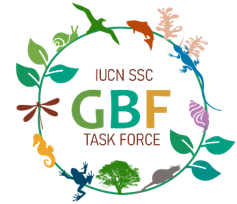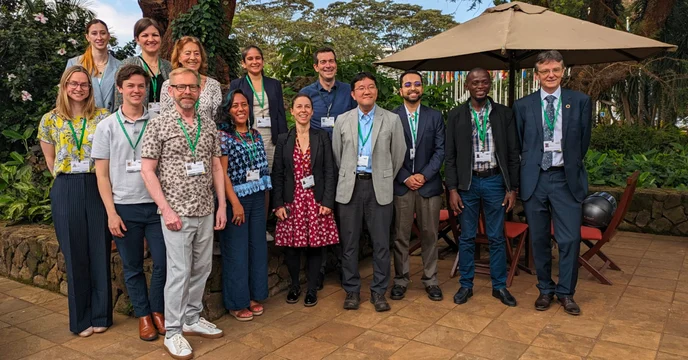See below for a collection of presentations hosted by the Task Force during 2024.
1st July 2024
Webinar series: Implemeting actions to achieve Target 4 of the Global Biodiversity Framework

Global Biodiversity Framework Task Force
IUCN Species Survival Commission
1st July 2024
Webinar series: Implemeting actions to achieve Target 4 of the Global Biodiversity Framework
Eliminate, minimize, reduce and or mitigate the impacts of invasive alien species on biodiversity and ecosystem services by identifying and managing pathways of the introduction of alien species, preventing the introduction and establishment of priority invasive alien species, reducing the rates of introduction and establishment of other known or potential invasive alien species by at least 50 per cent by 2030, and eradicating or controlling invasive alien species, especially in priority sites, such as islands.
Aims | Actions | Assessment
Priorities

Ensure that the use, harvesting and trade of wild species is sustainable, safe and legal, preventing overexploitation, minimizing impacts on non-target species and ecosystems, and reducing the risk of pathogen spillover, applying the ecosystem approach, while respecting and protecting customary sustainable use by indigenous peoples and local communities.
Aims | Actions | Assessment
Priorities

Explore our policy support archive below:
The 26th meeting of the Subsidiary Body on Scientific, Technical and Technological Advice.

The Post-2020 Biodiversity Framework Task Force countributed to IUCN position papers and information documents to support the negotiation process towards the Aichi targers and the development of the species-related targets of the Global Biodiversity Framework.
Ensure urgent management actions to halt human induced extinction of known threatened species and for the recovery and conservation of species, in particular threatened species, to significantly reduce extinction risk, as well as to maintain and restore the genetic diversity within and between populations of native, wild and domesticated species to maintain their adaptive potential, including through in situ and ex situ conservation and sustainable management practices, and effectively manage human-wildlife interactions to minimize human-wildlife conflict for coexistence.
Aims | Actions | Assessment
Priorities
